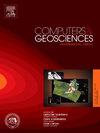Uncertainty-aware ensemble learning and dynamic threshold optimization for landslide susceptibility mapping
IF 4.4
2区 地球科学
Q1 COMPUTER SCIENCE, INTERDISCIPLINARY APPLICATIONS
引用次数: 0
Abstract
Landslides represent a prevalent and devastating geological hazard. Identifying areas susceptible to landslides is vital for disaster prevention and reduction. However, traditional models suffer from limited predictive accuracy, strong regularity in breakpoint selection for susceptibility zoning, and inconsistent predictions across different models, resulting in uncertainty in susceptibility assessment. To address these issues, this study proposes an innovative intelligent landslide susceptibility mapping approach that integrates ensemble learning, multi-model uncertainty analysis, and dynamic optimization. Focusing on Linxiang City, Hunan Province, China, this research synthesizes historical landslide inventories and field-identified unstable slopes as positive samples. Three base models were constructed: logistic regression (LR), random forest (RF), and graph neural network (GNN). Ensemble learning using the stacking method was applied to combine these models. The ensemble further incorporates prediction uncertainty estimation and multi-dimensional k-nearest neighbor (KNN) adjacency matrix. Utilizing an attention mechanism, the model dynamically integrates geographic features, environmental factors, and prediction outputs. The final output is a prediction model that synthesizes spatial structure information and prediction uncertainties. For susceptibility mapping, this study proposes a dynamic optimization approach combining Natural Breaks, Frequency Ratio, and Equal Interval methods, determining optimal threshold combinations through relative density distribution of landslide occurrences to enhance susceptibility classification rationality. Model performance was evaluated and compared using area under roc curve (AUC), where a larger AUC signifies higher predictive accuracy. The results show that the ensemble model outperformed all others with an AUC of 0.95, compared to the base models' AUCs of 0.82 (LR), 0.84 (RF), and 0.87 (GNN). This demonstrates that the ensemble learning methods that incorporate uncertainty achieve higher accuracy in risk identification than conventional models. The dynamic classification method also shows a better performance over conventional approaches in high-susceptibility classification precision and landslide density differentiation.
滑坡易感性制图的不确定性感知集成学习与动态阈值优化
滑坡是一种普遍存在的破坏性地质灾害。确定易受滑坡影响的地区对防灾减灾至关重要。然而,传统模型的预测精度有限,易感性分区断点选择的规律性强,不同模型之间的预测结果不一致,导致易感性评估存在不确定性。为了解决这些问题,本研究提出了一种集成集成学习、多模型不确定性分析和动态优化的滑坡敏感性智能制图方法。本研究以湖南省临乡市为研究对象,综合了历史滑坡清单和现场鉴定的不稳定边坡为阳性样本。构建了逻辑回归(LR)、随机森林(RF)和图神经网络(GNN)三种基本模型。采用集成学习的叠加方法对这些模型进行组合。该集成进一步结合了预测不确定性估计和多维k近邻(KNN)邻接矩阵。利用注意机制,该模型动态集成了地理特征、环境因素和预测输出。最后的输出是一个综合了空间结构信息和预测不确定性的预测模型。对于敏感性映射,本文提出了一种结合自然断裂法、频率比法和等间隔法的动态优化方法,通过滑坡发生点的相对密度分布确定最优阈值组合,以提高敏感性分类的合理性。使用roc曲线下面积(AUC)评估和比较模型性能,其中AUC越大表示预测精度越高。结果表明,与基础模型的AUC分别为0.82 (LR)、0.84 (RF)和0.87 (GNN)相比,集成模型的AUC为0.95,优于其他所有模型。这表明集成学习方法在风险识别方面比传统模型具有更高的准确性。动态分类方法在高敏感性分类精度和滑坡密度分异方面也优于常规方法。
本文章由计算机程序翻译,如有差异,请以英文原文为准。
求助全文
约1分钟内获得全文
求助全文
来源期刊

Computers & Geosciences
地学-地球科学综合
CiteScore
9.30
自引率
6.80%
发文量
164
审稿时长
3.4 months
期刊介绍:
Computers & Geosciences publishes high impact, original research at the interface between Computer Sciences and Geosciences. Publications should apply modern computer science paradigms, whether computational or informatics-based, to address problems in the geosciences.
 求助内容:
求助内容: 应助结果提醒方式:
应助结果提醒方式:


